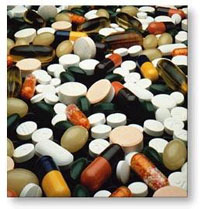Can we cure everything? An excessive request indeed, but scientists are making progress towards solving the most vexing health problems

While there are scientists who look to the future and try to push the human body beyond its natural limits, other scientists are fighting the same familiar calamities that have always faced us. We examined five stubborn patients and promising pathways that may eventually lead to a cure.
cancer
What goes wrong: When DNA is irreparably damaged - by viruses, exposure to chemicals or radiation - cells can get out of control and form tumors.
Why it's complicated: In one word: metastasis. Tumor cells spread to other parts of the body through the bloodstream or through the lymphatic system, and the disease runs rampant.
The existing treatments: surgery, chemotherapy and radiation.
Newer approaches: drugs that prevent the growth of blood vessels in the tumor, and vaccine components to strengthen the immune system.
Tomorrow's Medicines:
Finding the tumors earlier than ever. Proteins on the surface of cancer cells may be used as 'biological markers' - indicating signs of the presence of the disease in the body. Scientists study the hundreds of thousands of proteins in the blood to learn which ones are associated with certain types of cancer. Once a biomarker is identified, the next step is to create a traceable protein to bind to it. Doctors will then be able to detect tumors that are beginning to develop through routine CT or PET scans. Toxic substances will also be able to connect to proteins so that they will not only find the emerging tumors, they will also eliminate them.
diabetes mellitus
What goes wrong: the body does not produce enough insulin - the hormone that regulates blood sugar levels - or is resistant to its effects.
Why it's complicated: Blood sugar levels rise and fall significantly throughout the day, and it's hard to mimic the body's coordinated self-regulating system.
The existing treatments: diet and exercise regimen, along with insulin injections or drugs that increase the body's response to insulin.
Tomorrow's Medicines:
Customization of cells that produce insulin. Miodrag Stojkovic, an embryo specialist from the University of Newcastle in England, conducts experiments with stem cells made from the patients' own bodies. His plan: to take a skin cell from a diabetic patient and transfer its genes into an egg left over from fertility treatments. When this hybrid cell will begin to divide, collect stem cells - "motor" cells that can form into any type of tissue. Stojkovic hopes to transform these cells into pancreatic cells, which naturally produce insulin; He will then inject them into the patient, and they will match him genetically perfectly.
A capsule to relieve colds
allergies
What goes wrong: An allergic reaction is an exaggerated immune response. Symptoms can range from burning eyes to anaphylactic shock.
Why it's complicated: Allergy attacks are caused by our body's own immune system, so recklessly waging war can throw off our natural defenses.
The existing treatments: injecting tiny amounts of allergy-causing substances can stimulate the body to produce neutralizing antibodies. Antihistamines relieve symptoms.
Tomorrow's Medicines:
Shutting down the allergic reaction at its source. Researchers at the University of California, Los Angeles (UCLA) and the University of Virginia have developed an experimental treatment for cat allergy: a half-feline, half-human molecule. At one end is a protein found in cat hair that triggers an allergic reaction when it binds to the wall of cells in the human immune system. At the other end is a human protein that stops the allergic reaction when it binds to another protein on the wall of those cells. The combination blocks the problematic part of the immune system.
chronic pain
What goes wrong: Sharp pain is a healthy response to injury; Chronic pain is a defect in the system. It can result from poor communication between nerve cells.
Why it's so complicated: Scientists still don't fully understand the pathways that transmit pain signals to the brain, so they don't know for sure what the best way to block the stray signals is.
The existing treatments: painkillers in general use, from aspirin to morphine.
A newer approach: pacemaker-like devices that stimulate the nerves in the spine.
Tomorrow's Medicines:
A virus that will transfer a painkiller gene. Researchers were able to reduce some types of pain in rats by inserting a human gene that produces a natural pain reliever called enkephalin into their bodies. The scientists fused the human gene with a carrier - a neutralized herpes virus - and injected it under the animal's skin. The virus traveled through the nerves to the spine, where it inserted the new gene into the rat's own genetic material. The new gene started producing the pain reliever. The researchers hope to begin human trials within 18 months.
cold
What goes wrong: Colds are caused by viruses, bits of genetic material wrapped in protein shells.
Why it's complicated: More than 200 different viruses cause the common cold, and their protein shells keep changing to create new disguises.
The existing treatments: It seems that the world of medicine has not undergone a revolution in the last century: cover up, drink a lot and rest.
Tomorrow's Medicines:
put molecular sticks in wheels. When a virus enters a human cell, its outer shell opens, like a hidden door. Inside there are genes that turn the human cell into a virus-producing machine. Scientists hope to block the backdoor of a large cold-causing virus by filling a tiny cavity in its shell. A team of researchers has shown that antiviral substances called WIN compounds are able to infiltrate the protein shell of a virus and spoil it all. In human trials, one such compound, 'Falconril', accelerated the patients' recovery - within just one day. The pharmaceutical manufacturer "Sharing-Pelo" is developing a nasal spray version that will be on the shelves as soon as next year.
